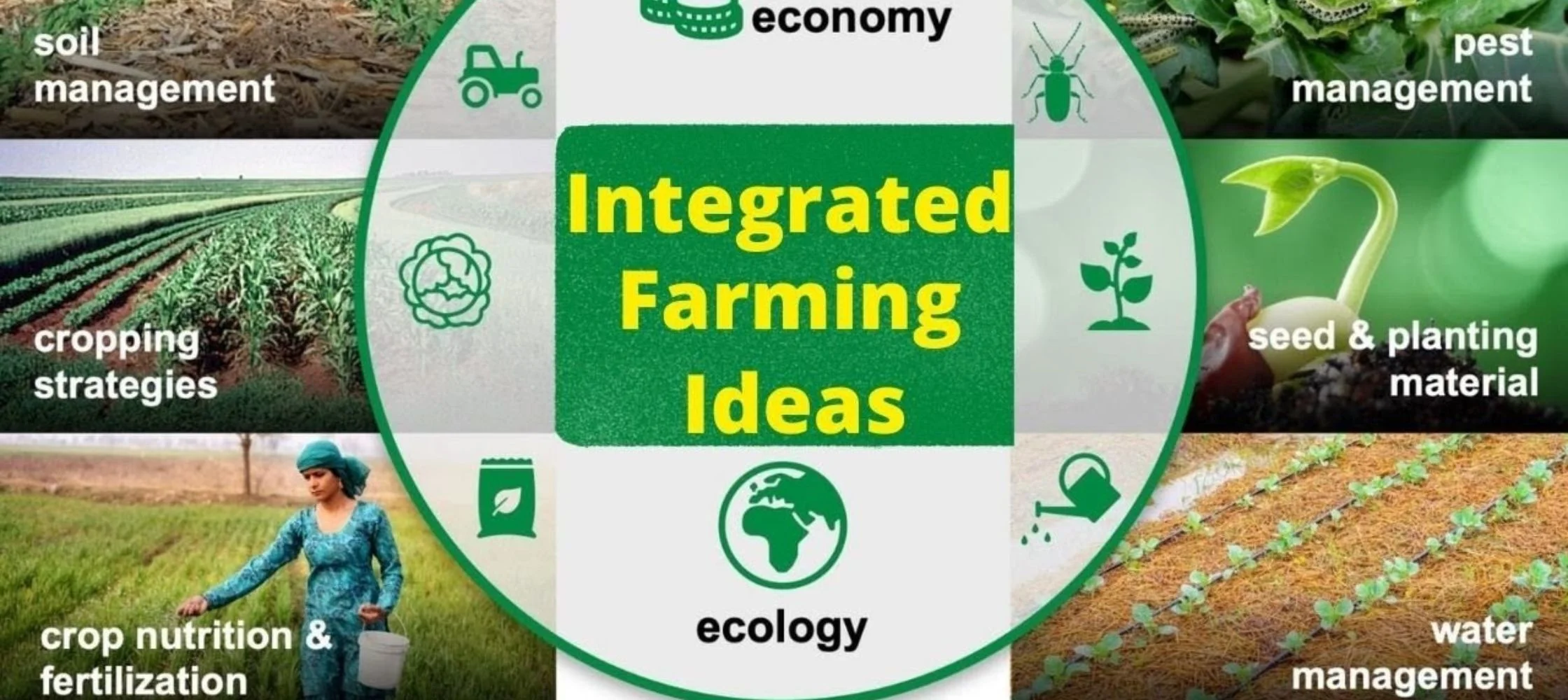
S S Walia, Tamanpreet Kaur
and Vajinder Pal Kalra
School of Organic Farming, Punjab Agricultural University, Ludhiana
In India, the percentage of small and marginal farmers is quite high and these farmers refrain from using modern farming equipment due to lack of sources of income. The modern agricultural production systems are simplified due to specialization and are intensified with high rates of external inputs to keep production conditions favourable and constant. These systems can be efficient and productive, but they habitually end up causing environmental problems, depletion of soil nutrients, affecting soil biota, and leading to higher cost of production. Likewise, intensive livestock enterprises such as large dairy, poultry industry, piggery industries, and animal feed preparations are dependent on external inputs (e.g. feed), thereby both externalizing pollution (for the production of inputs) and generating pollution hazards locally due to poor handling, storage, and disposal. These modern, specialized, and intensive agricultural practices affect the diversity in flora and fauna and increase vulnerability of resource poor farmers to weather and market fluctuations due to less diversification in agricultural commodities. Intensive agriculture systems in India are unable to provide regular income and employment, failing to achieve food, environmental, and energy security at the farm level. So, farmers depending on a single farm enterprise, such as a typical mono-cropping system, are unable to sustain their livelihood.
To overcome the problems encountered by specialized, input driven agriculture, the integration of crops, livestock, fishery components that sustains food, and nutritional security with regular and periodic income to farmers is vital. Integrated farming systems (IFS) that integrate animal and crop enterprises are receiving renewed interest in marginal, small, and medium farmers, who cultivate less than one hectare. The IFS approach encourages ecological intensification and aims to reduce use of anthropogenic inputs with enhanced ecosystem functioning like nutrient recycling, soil formation, soil fertility enhancement, and improving environmental performance. Efficiently managed IFS are expected to be less risky, as farmers benefit from enterprise synergies, product diversity, and ecological reliability.
So, why integrated farming?
IFS involves two or more production systems to function together on parallel footing
Integrated Farming System model at PAU, Ludhiana
The study was conducted at Punjab Agricultural University, Ludhiana under “All India Coordinated Research Project on Integrated Farming Systems (ICAR)” during 2020-21. The Integrated Farming System model under 1.0 ha (10000 sq m) area was developed during Kharif 2010. The various components included in the IFS model were crops, horticulture, aquaculture, dairy and agro-forestry. In 6400 sq m area, the crops such as paddy, basmati rice, maize and turmeric are grown during kharif season followed by wheat, gobhi sarson, pearl millet, berseem, potato, onion, baby corn and spring maize during rabi and summer season. Horticulture activities are being practiced in an area of around 1600 sq m involving citrus and guava plantation with an inter row spacing of 1500 sq m was utilized for cultivation of vegetable crops. Similarly, an area of 200 sq m, 1000 sq m, 300 sq m was utilized for dairy, aquaculture and agroforestry, respectively. In addition, cranberry (Karonda) and galgal were grown as boundary plantations. The results of the study concluded that an integrated farming system generated 280-man days/ha of employment. The total value of recycled farm products was Rs 85332/ha/annum amounting to 23.41 % saving of recycled farm products of input cost. Moreover, the study also indicated that the adoption of integrated farming system comprising crop-based enterprises, dairy horticulture, and aquaculture have recorded average net returns of Rs 5,03,399 with dairy component as the main contributor (Rs 2,86,428) followed by crop (Rs 1,22,239), boundary plantation (Rs 30,331), aquaculture (Rs 24,612), horticulture (Rs 23,096), kitchen gardening (Rs 14,917), and agro-forestry (Rs 1,776). Therefore, the 1.0 ha IFS model developed for small and marginal farmers provide gross returns of Rs 8,75,126/ha, costs incurred were Rs 3,71,728/ha and hence, net returns by deducting all variable costs were Rs 5,03,399/ha which was quite higher than the prevailing dominant rice-wheat cropping system (Table 1). The IFS models have been demonstrated at various Krishi Vigyan Kendras of state. Also, many agro-processing techniques have been developed by PAU through which the farmers can further enhance their income with value addition.
Table 1: Relative efficacy of different farm enterprises of IFS model
|
|
|
|
|
|
|
|
|
|
|
|
|
|
|
|
|
|
|
|
|
|
|
|
|
|
|
|
|
|
|
|
|
|
|
|
|
|
|
|
|
|
|
|
|
||||
|
|
|
|
|
|
|
|
|
|
|
|
|
|
|
|
|
|
|
|
|
The adoption of multiple farm enterprises in an integrated manner can ensure a substantial income generation to sustain the livelihood of farmers over the meagre income from self-standing enterprises. Therefore, there is an urgent need to promote the IFS concept under all agro-climatic conditions of the country.
Writers are from the School of Organic Farming, Punjab Agricultural University, Ludhiana
Your email address will not be published. Required fields are marked *
Pomegranates support a lot of good actions nitric oxide availability and levels, kidney health, blood vessel health, heart health, bone health, immune response, mitochondrial activity, and brain protection <a href=https://cialiss.quest>buy cialis online united states</a>
29 Jan, 2024
29 Jan, 2024
29 Jan, 2024
25 Jan, 2024
appaboofe
26 May, 2022
<a href=https://zithromax.buzz>zithromax with out prescription</a> The oxidative damage of PUFA, known as lipid peroxidation is particularly destructive, because it proceeds as a self- perpetuating chain reaction 46